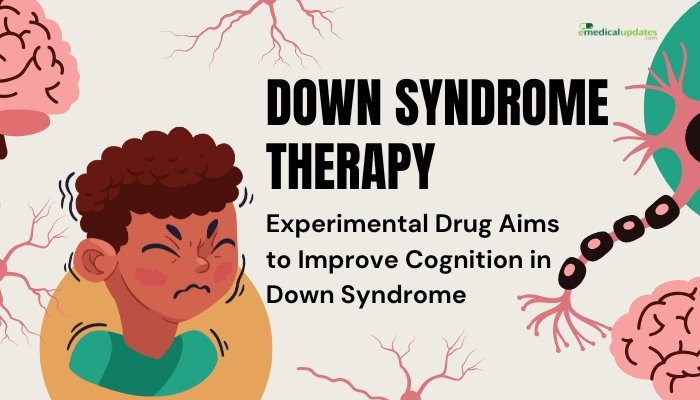Introduction
Rett syndrome is a rare neurodevelopmental disorder that primarily affects females, causing progressive loss of motor skills and speech abilities after a period of normal development. Families often notice that their child begins to lose previously acquired milestones—like purposeful hand movements or the ability to speak—around 6–18 months of age.
Until recently, no FDA-approved medication specifically addressed the core symptoms of Rett syndrome, leaving management to supportive therapies alone. Now, for the first time, a breakthrough drug—Trofinetide (brand name Daybue)—has gained approval to treat individuals with Rett syndrome. This historic milestone offers new hope for modifying the course of a condition that has long baffled clinicians and families alike.
In this article, we’ll overview Rett syndrome, explain how trofinetide works, discuss the clinical trial findings that led to approval, and consider the implications for patients, caregivers, and ongoing research.
Understanding Rett Syndrome
Key Characteristics
Rett syndrome is caused by mutations in the MECP2 gene on the X chromosome. While it mainly affects females—males with MECP2 mutations usually have severe, often lethal outcomes—rare cases do arise in males:
- Loss of Developmental Skills: Infants typically develop normally for the first few months, then regress.
- Impaired Communication: Many lose speech or have severe language difficulties.
- Motor Difficulties: Including repetitive hand movements (wringing, tapping), poor coordination, and reduced mobility.
- Cognitive Impairment: Varying degrees of intellectual disability, though actual cognition is often hard to assess given communication barriers.
- Other Challenges: Respiratory problems, seizures, scoliosis, and GI issues are common.
Current Supportive Therapies
Before trofinetide, management has focused on:
- Physical and Occupational Therapy: Improving mobility and daily living skills.
- Speech Therapy: Enhancing communication efforts through alternative modalities.
- Medications for Symptoms: Seizure control, muscle rigidity, or behavioral difficulties.
- Nutritional Support: Addressing feeding and GI complications.
While these interventions alleviate some challenges, they do not alter the underlying pathophysiology.
Trofinetide (Daybue): A Milestone in Rett Treatment
Mechanism of Action
Trofinetide is a synthetic analog of IGF-1 (Insulin-like Growth Factor 1) designed to modulate pathways involved in synaptic function, inflammation, and neuronal development. Rett syndrome’s pathology includes disrupted neuronal connectivity and chronic neuroinflammation. By targeting these dysfunctions, trofinetide aims to restore or compensate for the missing effects of MECP2 on brain development and function. Early research suggests it can:
- Improve Synaptic Plasticity: Possibly supporting better neuronal communication.
- Reduce Neuroinflammation: Which may slow the progression or severity of Rett-related symptoms.
- Enhance Key Growth Factors: Potentially helping maintain or partially recover motor and social/communication skills.
Clinical Trials Leading to Approval
The FDA’s approval stems from a series of trials involving children and adolescents with Rett syndrome:
- Phase II: Demonstrated safety signals and suggested improvements in certain behavioral and communication measures.
- Phase III (LAVENDER Study): Confirmed trofinetide’s effect on core Rett syndrome symptoms, measured by validated scales (e.g., Rett Syndrome Behaviour Questionnaire). Many participants showed improvements in communication, hand use, and social engagement.
Though side effects (such as diarrhea, vomiting) were noted, overall tolerability was acceptable. The significant improvements in daily functioning led regulators to grant approval.
Expected Benefits
- Greater Communication Abilities: Subtle gains in expressing needs or emotions.
- Motor Function Support: Potentially enhancing purposeful hand movements and reducing repetitive behaviors.
- Social Interaction: Early data suggest improvements in sociability and responsiveness.
Not all individuals respond equally, and trofinetide isn’t a cure—it aims to mitigate symptoms and slow progression rather than reverse all effects. Yet, for many families, even incremental progress can greatly enhance quality of life.
Practical Considerations
Administration and Dosage
Trofinetide is administered orally (often as a liquid solution). Families must follow guidelines about timing and dosing. Close monitoring by a specialist is crucial, especially if the child is already on multiple medications for seizures or other symptoms.
Potential Side Effects
Commonly reported adverse events include:
- Gastrointestinal Distress: Diarrhea, nausea, bloating.
- Infections: Possibly upper respiratory infections, though direct links remain under study.
- Weight Changes: IGF-1 analogs can alter appetite or metabolism.
Healthcare providers balance potential benefits with these risks, adjusting doses or providing supportive measures (like anti-nausea meds) as needed.
Insurance and Access
As a newly approved rare-disease therapy, trofinetide could be expensive. Coverage depends on each country’s or region’s healthcare system. Manufacturers often have patient-assistance programs for rare disease drugs. Pediatric neurology and genetics clinics frequently help families navigate coverage issues.
Impact on Families and Research
Improving Daily Life
Even moderate improvements can be transformative for parents and caregivers who manage feeding, dressing, and communication daily. For some, trofinetide might enable a child to express preferences or reduce frustration-driven behaviors. Such gains can ease caregiver stress and provide new opportunities for inclusion in educational or social settings.
Ongoing Studies and Future Therapies
Trofinetide’s success underscores a broader wave of gene-targeted and neurotrophic factor-based treatments for Rett syndrome and other neurodevelopmental disorders. Researchers continue to explore:
- Gene Therapy: Directly addressing MECP2 mutations.
- Combination Approaches: Using trofinetide with other treatments or supportive therapies for greater synergy.
- Earlier Intervention: Considering medication in infancy or very early childhood when neural plasticity remains high.
Community Perspective
Advocacy groups like the International Rett Syndrome Foundation champion research and support families. The advent of trofinetide offers renewed hope, shifting the narrative from purely supportive care to active pharmacological management. Nonetheless, it’s crucial to set realistic expectations—improvements can be gradual, and individual outcomes may vary widely.
Frequently Asked Questions
- Does trofinetide cure Rett syndrome
- No. It addresses core symptoms, potentially improving communication and motor abilities, but it’s not a cure.
- At what age can trofinetide be given?
- Current approvals often focus on certain pediatric and adolescent age ranges, with dosing guided by the child’s weight and clinical condition.
- Are there other MECP2-focused drugs?
- Multiple compounds are under investigation, including gene therapy approaches. Trofinetide is the first to gain approval specifically for Rett.
- What if my child experiences side effects?
- Monitoring with the prescribing physician is essential. Adjusting dosage, adding supportive medications, or changing the regimen may help.
- Will insurance cover trofinetide?
- Coverage varies by region and policy. Consult with your healthcare provider and insurance plan. Patient-assistance programs might be available through the manufacturer.
Conclusion
The FDA approval of trofinetide marks a pivotal milestone in the quest to treat Rett syndrome, offering families tangible progress in a field that previously relied solely on supportive measures. While not a cure, this first-ever drug can yield significant improvements in critical areas like communication, purposeful movements, and social interactions—enhancements that profoundly affect daily life for children with Rett and their caregivers.
With more advanced therapies on the horizon, the success of trofinetide highlights the power of targeted research and the potential for breakthroughs in other underexplored neurodevelopmental disorders. As families, clinicians, and researchers embrace these developments, the future of Rett syndrome care seems brighter than ever—anchored in the hope that ongoing innovation will continue to expand treatment possibilities and enrich the lives of those living with this rare condition.
References
-
- Neul JL, et al. (2022). “Randomized phase III trial of trofinetide for Rett syndrome.” NEJM.
-
- FDA Press Announcements. (2023). “First drug approved for Rett syndrome.”
-
- Banerjee A, et al. (2021). “Understanding MECP2 and Rett syndrome: insights for therapeutic approaches.” Nat Rev Neurol.
-
- Acadia Pharmaceuticals. Official press release on trofinetide (Daybue).
-
- Rett Syndrome Research Trust. (2023). “Trofinetide in clinical practice: guidelines and support.”







